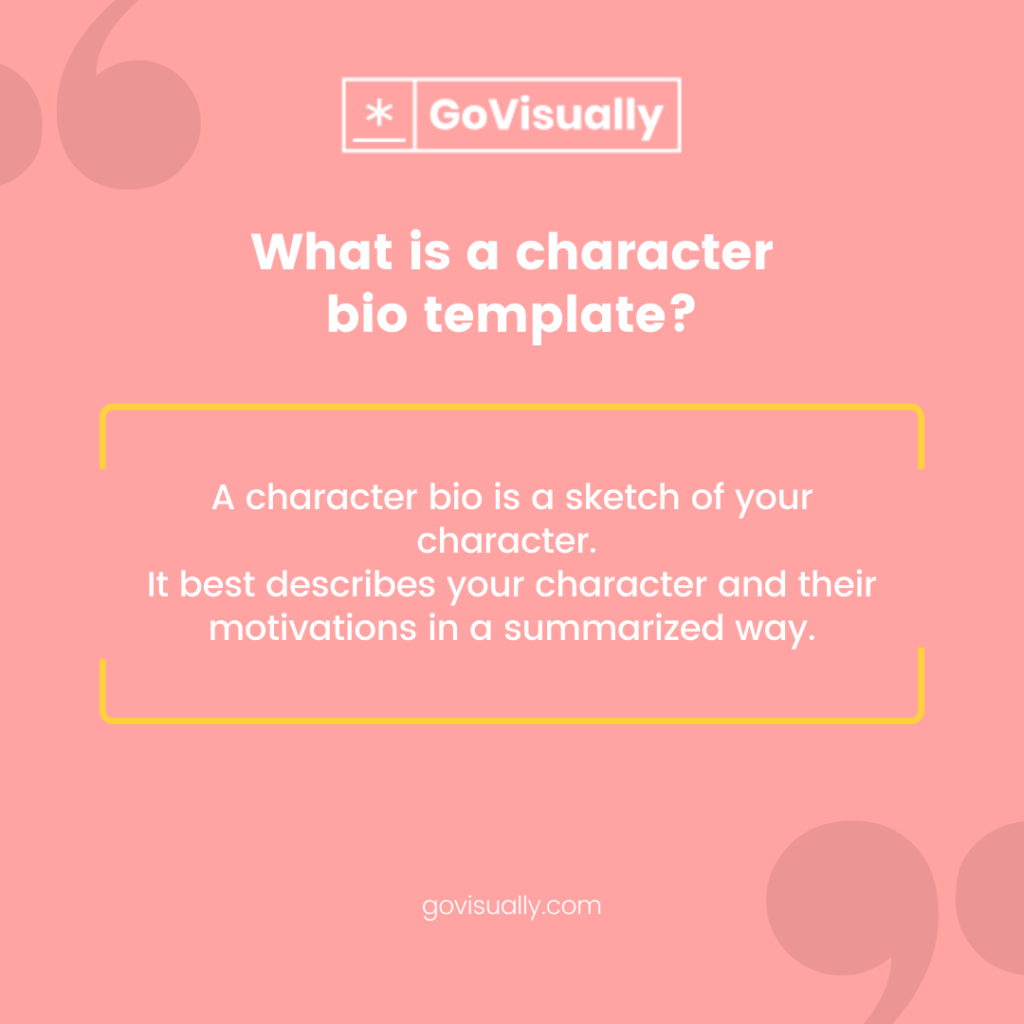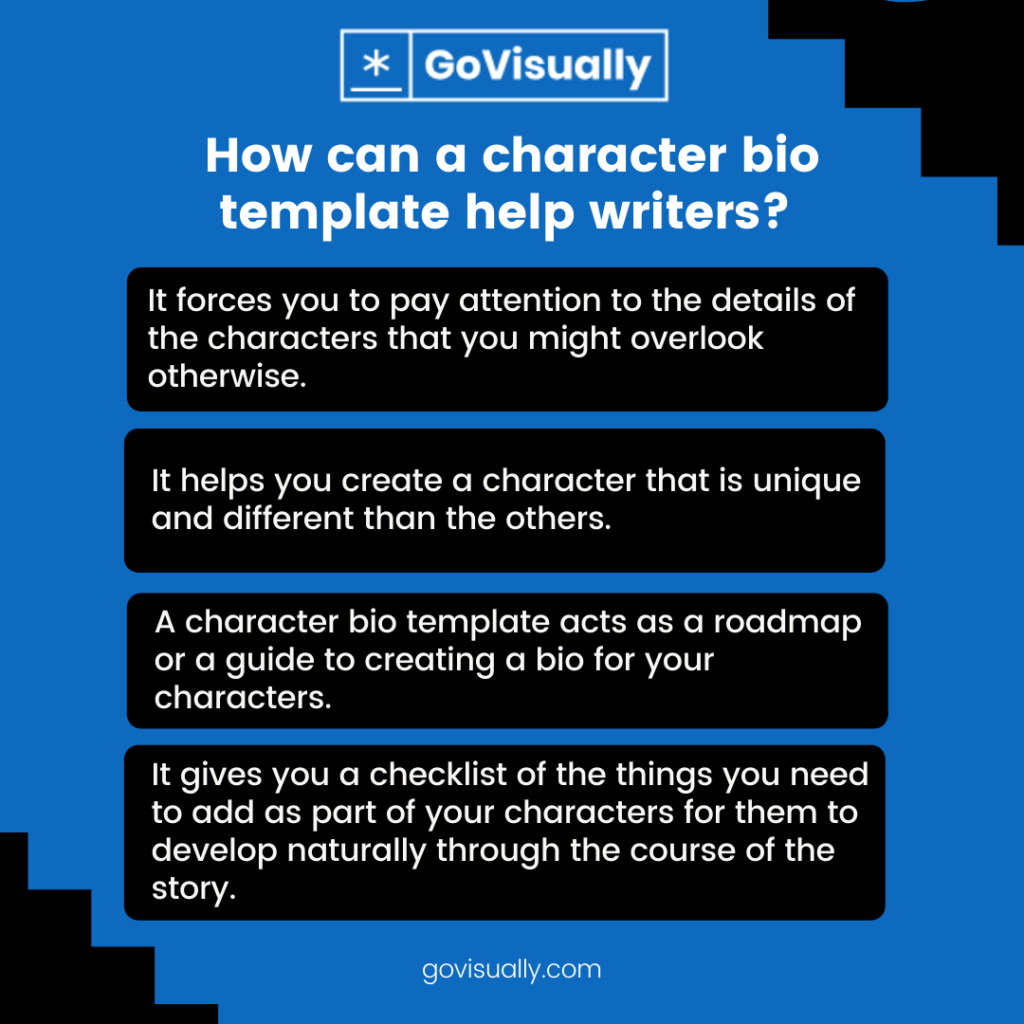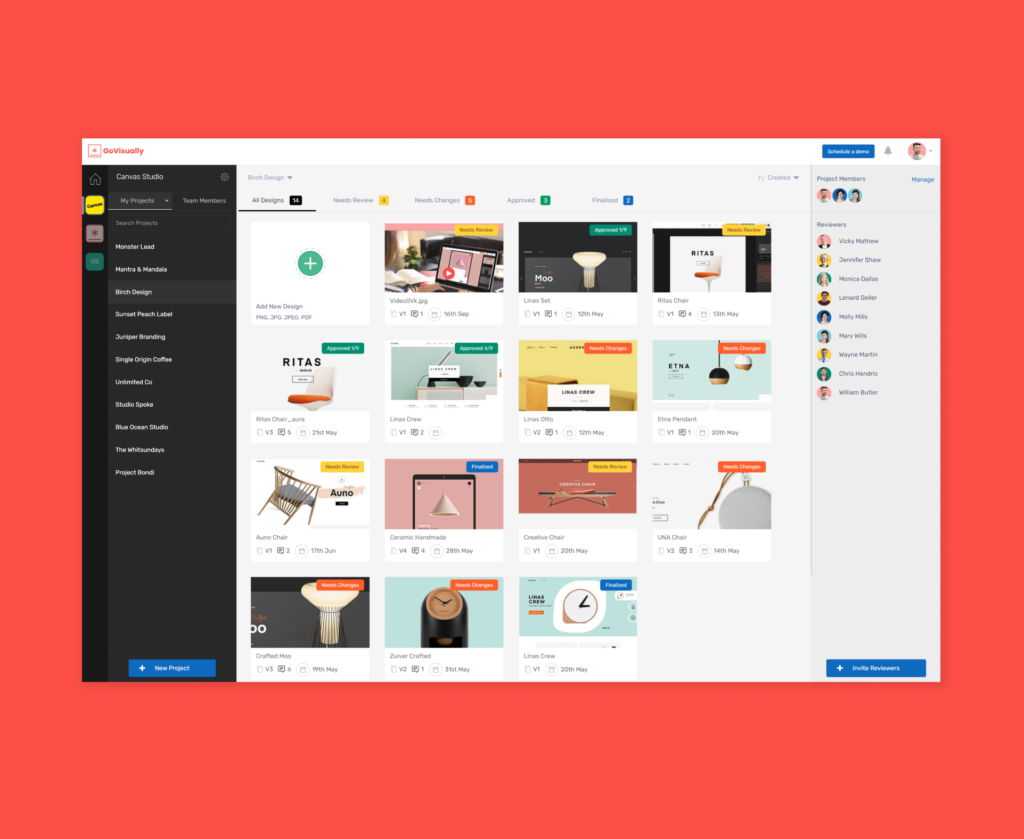Are you a writer? Puzzled with the magic of creating your characters? You need a character bio template to make the magic work for you!
Creating a character bio template will help you create a unique character that readers will remember. It’s also a great way to start brainstorming ideas for your story.
We understand (and love!) how all writers are different in their way. However, certain tricks and conventions can help you discipline your craft. More importantly, it can help you create better stories and characters.
Whether you’re writing a fiction story, a screenplay, or characters for a video game – using a character bio template will help you stay at the top of your game.
So in this article, we’re going to break down the most important aspects of a character. We have listed 75+ attributes that you need to consider. And we’ll also discuss how a character bio template helps!
Excited?
Let’s start!
Table of Contents
What is a character bio template?

A character bio, also known as a character profile, is the sketch of your character. It best describes your character and your motivations in a summarized way.
They are often crucial to how a character will perceive the story’s events and react to the changing circumstances.
Think of it as the nature of your character – their motivation, deepest desires, and reason to act. And that is all the more reason you should invest time in creating a character bio that best depicts your characters.
It doesn’t matter if you’re writing a protagonist, an antagonist, or just a background character – you should have a bio for everyone. That would also allow the reader to form a personal connection. And ultimately, contribute to making your story better!
How can a character bio template help writers?

A character bio template acts as a roadmap or a guide to creating a bio for your characters.
It gives you a checklist of the things you need to add as part of your characters for them to develop naturally through the course of the story.
Writing a character bio is a good exercise for writers because it forces them to think about what makes a character unique. It also gives them practice thinking about different aspects of their character’s personality, such as their likes and dislikes, hobbies, and goals. These aspects define the motivations of your characters. Or, in simple words, show the reader why a character behaves a certain way.
More importantly, it forces you to pay attention to the details of the characters that you might overlook otherwise.
It can help create memorable characters.
For instance, all Potterheads would remember Hermoine as a bookworm. And that’s her characteristic.
In the same way, if you’ve watched Game of Thrones (it’ll be crazy if you haven’t), you’d remember how one of the biggest plot changes came about due to a change in physical appearance. Ned Stark, the most publicly loved character, found the truth about Joffrey’s lineage and Cersei’s affair because he had blond hair, unlike his father and his forefathers, who all had brown hair.

So, seemingly unimportant details can help you create a great story. And with a character bio template, you can easily and quickly fill these out!
How to create a character bio?
A character bio template should include the general, personal, emotional, and physical aspects of a character’s life.
Once you have written down these details, you will need to organize them into a coherent document. You can start by writing out each element separately. Then, as you go through writing, you can add more detail to each section.
To make sure that your character has a clear personality, you should think about what kind of traits they would possess. This includes hobbies, interests, likes and dislikes, and even quirks. It’s also helpful to consider the type of people your character might interact with. Think about their friends, family members, coworkers, classmates, neighbors, etc.
Once you’ve thought about these questions, you can start writing down some ideas. You can use them to help you develop your character’s personality.
If you’re having trouble coming up with ideas, try brainstorming. Ask yourself questions like “What does my character do when he or she feels stressed out?” or “What does my main character love doing?”
Let’s discuss these aspects in detail.

Add general information
It would help if you always started identifying and assigning the general information to your characters. This would help you build their base upon which other aspects of their personality can be created.
General information is the most crucial aspect of any character. That’s because it’ll give the character its identity in the story. And that is why it’s the first thing to start with.
While writing the general information, avoid adding unnecessary cliches or overt use of adjectives.
So here’s a list of things to include. But do keep in mind that some of these might not be applicable in a few setups or stories. For instance, if you’re writing a sci-fi story, then the job for a character might not apply.
So take the relevant things to your story genre and fill those up.
- Full name
- Nickname
- Age
- Nationality
- Religion
- City and country of birth
- The current place of residence
- Job title
- Employing company
- Income and financial status
- Relationship and marital status
- Mother tongue
- Birthday
- Are they a homeowner, or do they live elsewhere?
- What does the character like, and what are their hobbies?
- What does the character dislike?
Add the background of your character bio
Next is the background for your character. And perhaps one of the most meaningful aspects of their personality.
Think of it this way – we all come from somewhere, and ultimately, our roots define our future, behavior patterns, aspirations in life, and the methods we’ll adopt to achieve our dreams.
The background of a character becomes the backbone for its growth. So make sure you take your sweet time while writing about it.
Here are a few important pointers to keep in mind.
- Write about their childhood
- Include their family and ancestral history
- Write about their adolescence and teenage. Include the experiences that have shaped their mindset.
- Write about their adulthood dreams and the factors they are basing them on.
Expand on the role and involvement of the character
You can have as many characters as you want in the story. However, all of them wouldn’t be important. You’ll have the main characters, the side characters, and then characters that are simply there in the background and have little to no effect on the plot.
And that is why it’s important to define the role and involvement of each character. This would help you introduce them properly and write their trajectory reasonably.
Here are the four most important things you should consider when writing about the role and involvement of the character.
- Identify the character’s involvement in the story.
- How important are they for the plot to progress and develop?
- How are you going to introduce the character?
- When will be the first time that they are mentioned in the story?
Describe their relationships
At the end of the day, our relationships define who we are and what choices we will make for the people in our lives.
The same extends to the universe of your story and your characters.
For them to be completely human, they will need relationships. Or, if it’s important to how they are, they might not have any relationship at all. In either case, it’s crucial to expand on those details.
You’ll notice that sometimes relationships can also be used as a good plot device.
Here are some of the key relationships you should identify for your characters.
- Relationship with themselves. This is the most important aspect of any character’s personality. And sadly, it’s also the one that’s neglected the most.
- Parents
- Grandparents
- Siblings or half-siblings
- Spouse or partner
- Children
- Grandchildren
- Friends
- Colleagues
- Enemies
- Relationship with other characters of the story that they will interact with.
Include physical characteristics
To make your character more perceptible to the imagination, you must draw upon their physical characteristics.
Sometimes, these can be crucial to how a character behaves in the story. For instance, in the original Batman comic, Joker’s deformed smile is an important physical character that adds meaning to his actions and presents a background to his tragedy.

Here are the pointers you should keep in mind.
- Their body type and body built
- Face type
- Hair color
- Skin color
- Eye color
- Height
- Weight
- Do they wear glasses?
- Do they have a prominent birthmark?
- Their dress sense and personal style. Think along the lines of how modern or old-fashion they appear to be.
- Addictions and bad habits
- Good habits and hobbies
- Their dialect
- Are they healthy, underweight, overweight, or obese?
- Do they have any diseases or illnesses?
- Do they smoke or drink regularly?
- Does the character have any disabilities?
- Does the character prefer any proverbs?
Include mental characteristics
Just like physical characteristics define your character’s appearance and aura, their mental aspects would describe their inner spirit. It is crucial to identify their motivations.
Note that some characters’ mindset changes as the story progresses. And that makes it all the more reason to identify their mental characteristics so the journey from point A to B can be more visually seen.
Here’s a list of some of the most crucial mental aspects to consider for writing a good character bio template.
- Their perception of themselves
- Assumed external perception
- How confident are they
- Are they more practical in their decision-making or emotional?
- How would you qualify them; genius, intelligent, dumb, smart, or streetsmart?
- Their fears, flaws, and weaknesses
- Highlight their strengths
- Expand on their life goals and how they perceive them.
- Sense of humor
- What annoys or upsets this character the most?
- What are their trigger points?
- And finally, what brings them joy and mental peace?
Add emotional characteristics of your character bio template
And finally, the last aspect of completing your character bio template is to add their emotional features.
Remember, these can overlap with some of their mental capabilities too. However, you should still focus more on their emotional intelligence.
Here are the pointers to keep in mind when designing a good character.
- What are the character’s emotional strengths?
- What do you think the character’s emotional flaws are?
- Are they an introvert, ambivert, or extrovert?
- How do they react to rage? What triggers their rage and fury?
- Are they dissatisfied? How do they reach it?
- Their response to opposition and rivalry
- How do they respond to changes and new circumstances?
- How do they deal with problems? Do they have a problem-solving mindset?
- What is the purpose and meaning of their life?
- What are their desires and motivations in life?
- Identify the situations that terrify the protagonist
- What brings joy to this character?
- Do they have a healthy emotional relationship with their partners? What about themselves?
What is the best review software for writers?
The most important part of your work is editing and ensuring everything aligns as a writer.
However, this process can take a lot of energy and mental space. And sometimes, it can become exhausting.
So to avoid the long hassle of the review and approval process, use GoVisually.

GoVisually is the #1 online proofing software that helps you stay aligned with your editors and reviewers.
You can upload your character bio or book in the form of a PDF and invite your editors to give their feedback. Then check their feedback in real time, compare versions and make the final changes.
Doesn’t get better? Well, it does!
The best part is that you can invite as many external reviewers as you want without them having to register!
Crazy, right?
So book a demo today and unleash the power of GoVisually.
Want to send big files?

Need a quick way to share large files and creative assets?
With GoVisually Share, it’s absolutely free! Try today.




